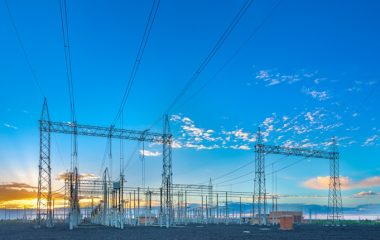
Photo: Emilija Jovanović / Ministry of Mining and Energy
Serbia has aligned itself with Europe’s vision for the decarbonization of the energy sector, Minister of Mining and Energy Dubravka Đedović Handanović said and announced that the government adopted the Integrated National Energy and Climate Plan.
Almost one in two megawatt-hours of electricity will be produced from clean sources in 2030, according to Minister of Mining and Energy Dubravka Đedović Handanović. She revealed that today the government adopted the Integrated National Energy and Climate Plan (INECP or NECP) of the Republic of Serbia for the period up to 2030 with a vision to 2050.
A new phase is beginning in the development of the energy sector and it should contribute to boosting the security of supply together with an increase in the share of clean sources and greater environmental protection, the minister said.
“By adopting the integrated plan, Serbia is getting a strategic document aligned with Europe’s vision regarding the decarbonization of the energy sector, and it represents a roadmap of sorts for Serbia in the energy transition. The plan is adjusted to fit the characteristics of our energy sector and the imperative for our citizens and companies to be able to count on secure supply at any moment. The integrated plan places the focus on investments in renewable energy sources, where around 3.5 GW of new power plants utilizing sun and wind energy needs to be connected to the network by 2030,” Đedović Handanović stated.
Đedović Handanović: Plan is ambitious but doable
The document includes intensive investments in the improvement of energy efficiency in all sectors, bigger utilization of renewable sources for heating and cooling and a gradual electrification of transportation, the ministry said. Applying the measures from INECP, in her words, needs to enable the fulfillment of the main goal in the fight against climate change – a reduction in greenhouse gas emissions by 40.3% from the 1990 level.
Serbia is also working on increasing its own energy security and independence and meeting its international obligations, the minister of mining and energy pointed out
“By adopting an ambitious, but feasible energy transition plan, Serbia demonstrated readiness to work, on the one hand, on increasing its own energy security and independence, and on the other, on meeting its international obligations when it comes to materializing the global climate agenda. This is an importand strategic document for the alignment with the European Union’s requests and it includes the goal of coupling the electricity market with the EU’s single market,” Đedović Handanović asserted.
The minister noted that INECP targets encompass the implementation of public and private sector investments.
“The energy transition is a matter both for the state and entrepreneurs, the entire private sector and every individual. We count on private investments and on an increase in energy efficiency in households, which the state certainly subsidizes,” she said.
Target share of renewables in consumption is 33.6%
The Integrated National Energy and Climate Plan defines strategic targets and the dynamics for their fulfillment in the energy transition process. It has five key dimensions: decarbonization, encompassing greenhouse gas emissions and renewables; energy efficiency; energy security; internal energy market; and research, innovation and competitiveness.
Upon receiving the draft, the Energy Community Secretariat recommended to Serbia in November to, among other items, increases the emissions reduction goal to 40.3% from 40%. The government published the final version in December.
The share of renewable sources in gross final energy consumption is envisaged to reach 29.8% in 2025 and grow to at least 33.6% by the end of the observed period. In electricity production, the plan sets a trajectory of 34.7% through to 45.2% while the stake in heating and cooling rises insignificantly, from 41.1% to 41.4%.
Deadline to submit next Integrated National Energy and Climate Plan is January 1, 2029
Energy Community contracting parties had until the end of June to submit NECPs for the period of 2025 to 2030. So far Albania, North Macedonia, Georgia and Ukraine have delivered on the commitment. The other governments only sent in the drafts and got feedback from the secretariat.
The deadline for the next draft plan, for 2031-2040, is January 1, 2028, and one year later for the final version.
Of note, last week the government launched the public consultation process for the Draft Energy Development Strategy of the Republic of Serbia until 2040 with a projection through 2050.


















What about coal phase out? If recall correctly as part of EBRD agreement the Serbia has obligation to set out coal phase out by 2050?